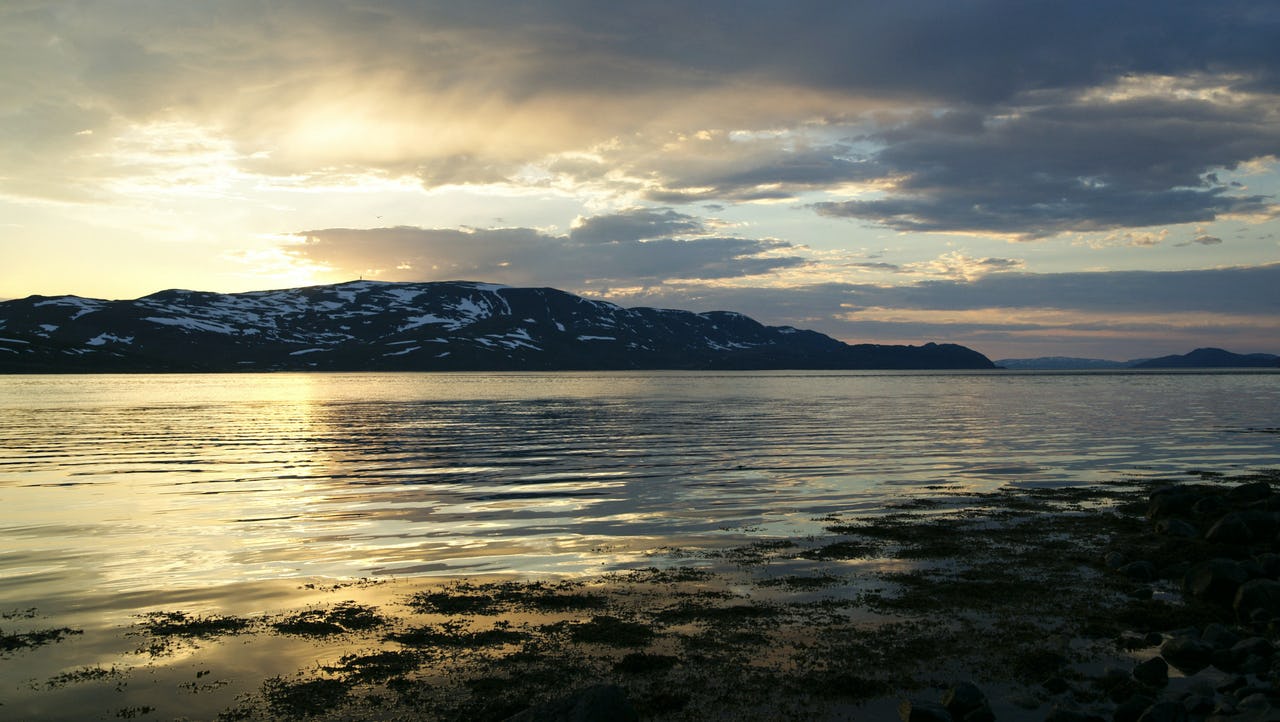How will COVID-19 impact the future of Norway’s Nussir mine?

The marine environment of Repparfjord, where Nussir’s mine tailings will be deposited. Photo: Natur og Ungdom
Fifteen years have passed since the establishment of Nussir ASA, a company which was created to develop the eponymous Nussir copper deposit and the adjacent Ulveryggen deposit in the region of Kvalsund, northern Norway. Located within Sápmi, a region traditionally inhabited by the Sámi people, the Nussir copper mine has turned out to be one of the most controversial project developments in northern Fennoscandia. Since the conception of the project, different actors such as the Sámi Parliament, the Sámi Council, and environmental NGOs have voiced their concerns or actively protested, arguing that the mine will disturb reindeer herding activities and damage the local environment, in particular polluting the Repparfjord, in which the mine tailings will be deposited. On February 14, 2019, the Ministry of Trade, Fisheries and Industry finally approved Nussir ASA’s operation and gave the green light to mining in the region. Soon after, the Sámi Parliament appealed the government’s decision to license Nussir ASA for mining to the King at the Council of State, requesting the cancellation of the licensing. Their appeal was rejected in November 2019.
While it was expected that Nussir ASA’s operations would start within the first term of 2020, the conditions to begin mining in the region became rather difficult as a result of the COVID-19 outbreak. Although the preparations for the Nussir mine were already funded before the pandemic hit, the developments in the region had to remain stagnant due to the uncertainty in global markets. The question now stands as to what extent the ongoing mine development process has been influenced by COVID-19, and how Nussir ASA can cope with the changing market conditions.
The COVID-19 pandemic has had far-reaching consequences beyond the spread of the disease itself, and the outlook for the Norwegian economy has changed radically within a short period of time. Since mid-March, the outbreak of the coronavirus and subsequent infection control measures have caused an enormous slowdown in the Norwegian economy. Following the tumbling oil price and the uncertainty in global markets, the Norwegian krone suffered its biggest single day collapse against the US Dollar in modern times. The mining industry has also been caught up in the turmoil. Mining sites around the world have become hotspots for the spread of coronavirus, while copper prices hit their lowest level since January 2016, with three-month copper futures on the London Metal Exchange (LME) touching $4,371 per metric ton.
Surprisingly, as of June 2020, there is no longer a significant effect from the pandemic on copper prices, which has recovered to just one to two percent below the average pre-COVID-19 rate. In the absence of sufficient capital, Nussir ASA is now trying to find investors abroad. The company’s managing director has been optimistic that the capital markets will soon be normalized, additional investors will be approached, and Nussir ASA will be able to start mining during 2020. On the other hand, experts argue that the long-term impacts of the pandemic on the mining sector cannot yet be predicted.
The Norwegian government seems to be eager for mining to start at the Nussir project, despite the challenging times that the mining industry has been experiencing. Recently, the minister of Regional Development and Digitalisation Linda Hofstad Helleland highlighted that the permit for mining in Kvalsund can be seen as an opportunity for getting more people to work after the COVID-19 crisis, which has increased the unemployment rate in the country. The government expects that the Nussir mine will bring jobs and investments to the municipality, and that it could further contribute to the ‘green shift’ of the Norwegian economy, which is highly dependent on increased extraction of many kinds of metal that are used in new technologies such as electric vehicles. Conversely, the Sámi Parliament argues that the profitability of the project is no longer feasible after the turbulence in copper prices and the instability of global and local markets. It further criticized the minister’s statement, insisting that the post-COVID situation in the Norwegian market cannot justify another violation of Indigenous rights or environmental law in the Repparfjord. It is well known that industrial initiatives in the name of Norway’s ‘green development’ often disturb Sámi traditional activities and are described by the Sámi as a form of ‘green colonialism’.
Given that the preparations for the mine’s construction were already funded before the pandemic started, beginning the operations in Kvalsund does not seem to be a question of ‘if’, but ‘when’. The key for Nussir ASA is to understand how the pandemic will require the copper mining industry to adapt in response to the broader disruptions and the emerging demands that are happening around it. Indeed, if Norway is hit by a severe second wave of coronavirus infections, an additional turbulence in the state’s economy or global copper price may delay further the start of mining in the region.
In the meantime, as long as the Norwegian government continues to encourage industrial development to the detriment of Sámi traditional activities, the Sámi community will keep opposing such projects. In that sense, the debates over mainland Europe’s northernmost mine will undoubtedly continue in the coming months. With mining in Nussir being further delayed due to the COVID-19 pandemic, another significant question will arise: how longer will the Norwegian government resist the pressure from those actors advocating against the mine?